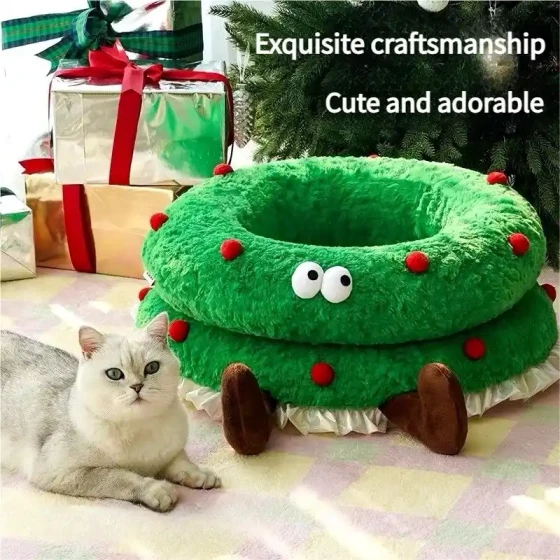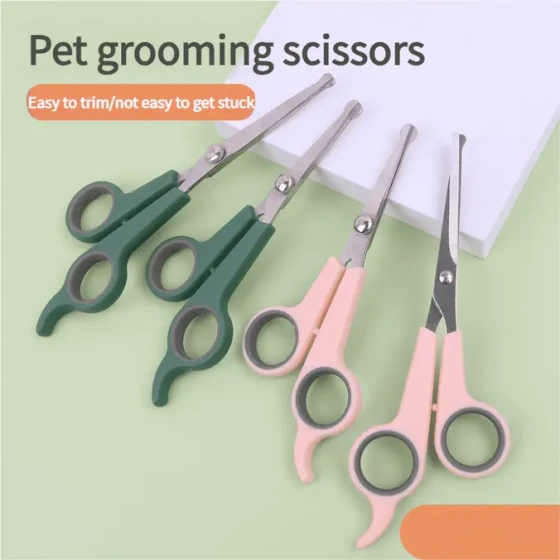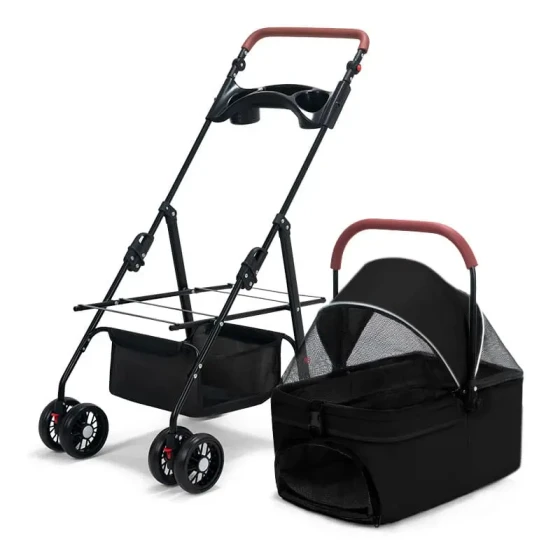Cat Submission Behaviors_Interpreting 10 Signs of Cats Showing Weakness
Cats, as the “masters” and “fur babies” in our homes, often leave us puzzled with their emotions and thoughts. Although cats cannot speak, they are experts in body language, quietly conveying messages through postures, eyes, ears, tails, and other signals. Especially when cats feel uneasy, scared, or want to avoid conflict, they display many “submission” signals. Understanding these signs not only helps us better grasp cats’ inner world but also prevents misunderstandings, allowing cats to live more peacefully and happily.
Showing weakness is not true cowardice for cats but a form of wisdom. It is like humans using humble postures in social settings to avoid unnecessary disputes or choosing gentle ways to express “I mean no harm, please don’t hurt me” when facing stronger individuals. These behaviors are instinctive responses for cats to adapt and protect themselves, and they are important means to maintain harmony in multi-cat households or other social scenarios.

Interpreting 10 Signs of Cats Showing Weakness
Cat submission signals are diverse and subtle; usually, they don't show just one but a combination. Here are 10 common and important cat submission signs to help you become a more understanding cat owner:
1. Curled body, lowered posture
When cats feel scared or uneasy, they try to curl up, pressing their bodies close to the ground, as if wanting to “disappear,” making themselves look smaller and less noticeable. “I’m not sleeping, I just want to become a ‘little bread’ and don’t want anyone disturbing me.” This posture protects vulnerable areas and sends a “I am not a threat” message.
2. Tail tucked or held close to the body
The tail is the “barometer” of a cat’s emotions. When scared or uncertain, cats lower their tails or tuck them tightly between their legs or curl around their bodies. It’s like saying, “I’m so scared, can you not see me?” This behavior minimizes their body size to reduce chances of attack. In multi-cat families, lower-ranking cats might raise their tails as a sign of submission and seeking peace.
3. Ears flattened back or “airplane ears”
Cat ears are very flexible and reflect their feelings. When scared, startled, or angry, cats flatten their ears backward against their heads, creating so-called “airplane ears.” This is not just a defensive posture but also a sign of submission, as if saying, “I don’t want trouble, please spare me.”
4. Dilated pupils
In well-lit environments, if a cat’s pupils suddenly enlarge and round, it’s usually a signal of tension, fear, or feeling threatened. Bigger pupils gather more light to better observe the surroundings, preparing for escape or defense. Like humans being hyper-aware when extremely nervous, cats assess potential dangers this way.
5. Avoiding eye contact, evasive gaze
Direct eye contact between cats, especially unblinking stares, is often viewed as a challenge or threat. When cats want to show submission or avoid conflict, they avoid eye contact or blink slowly, signaling they harbor no hostility. This is a gentle “I’m not competing with you” indication.
6. Grooming or pretending to groom
When stressed, anxious, or embarrassed, cats may suddenly over-groom. This “displacement behavior” is like humans scratching their heads when nervous; cats lick their fur to distract themselves, self-soothe, and relieve discomfort. This behavior does not mean they are dirty but reflects inner unease.
7. Lying down exposing belly (during conflicts)
While cats rolling to show their belly often indicate trust and relaxation, during cat group conflicts or feeling suppressed, exposing the belly is a clear “submission” signal showing no attack intent and hoping the other side will stop aggression. It is a “surrender” pose because the belly is the most vulnerable area, shown only in extreme trust or weakness.
8. Body stiffness or “freezing”
When extremely frightened or stressed, cats might suddenly stop all movement, stiffen, and even “freeze” in place. This is an instinctive defense reaction aiming to avoid attention or assess the situation, preparing for the next move. Like the saying “scared stiff,” cats wait for an opportunity.
9. Quiet low growl or hissing (early warning)
At the edge of submission, cats might emit a soft low growl or short hiss. This warning signal shows unease and a desire for distance but reluctance to attack immediately. It’s an attempt to “take a step back for safer space.” If ignored, cats may escalate to stronger defensive behavior.
10. Seeking hiding or fleeing
When unable to cope with pressure or threats, cats instinctively seek high places, small or concealed spaces to hide, such as under sofas, inside cabinets, or on top of tall cat trees. This is an active display of submission and conflict avoidance, signaling their wish for safety and distance from danger. If your cat hides at doorbell sounds or acts cautious around strangers, these may be stress indicators.
Why is Understanding These Signals Important?
Understanding cat submission behaviors is crucial for our relationship with cats:
- Avoid misunderstandings, deepen bonds: Often we mistake a cat’s fear or submission as “aloofness” or “bad temper,” resulting in unsuitable interactions that increase their stress. Knowing these signs helps us treat cats with more empathy, avoid unnecessary scolding or force, and build deeper trust and affection.
- Intervene timely, relieve stress: Cats under long-term stress and fear may exhibit behavioral issues like inappropriate urination, excessive grooming causing hair loss, or aggression. Identifying submission signals helps detect stress sources early and take measures (e.g., safe spaces, reducing stimuli, more interaction) to ease anxiety.
- Ensure safety, coexist harmoniously: When cats show submission signals, they are vulnerable or uneasy. Forcing close contact or interaction then may trigger self-defense, causing scratches or bites. Respecting their space and letting them choose when to approach is the safest way to coexist.
Common Questions
Q1: Does a cat showing its belly always mean submission?
A1: Not always. Cats showing belly usually signify trust and relaxation, a “cat kiss.” But in multi-cat households or conflicts, a cat exposing its belly to another usually signals submission or lack of aggression. Context matters.
Q2: Why does my cat always hide?
A2: Hiding is a common way cats cope with stress and fear. It might signal perceived threats in the environment or need for a quiet, safe private space. If frequent, check for causes like noisy surroundings, unfriendly guests, or new pets stressing your cat.
Q3: What do “airplane ears” mean in cats?
A3: “Airplane ears” generally indicate anger, fright, unhappiness, or feeling threatened. It’s part of their defensive stance, showing they are assessing the situation and preparing to react. When you see it, pause interaction and give space.
Q4: Is licking fur a sign of submission?
A4: Excessive or sudden grooming, especially under stress, can be a “displacement behavior” or self-soothing sign. Cats lick fur to ease anxiety, showing submission and trying to calm themselves.
Conclusion
Cat body language is the bridge for communication between them and us, and submission behaviors are the “little secrets” on that bridge. As responsible cat owners, we must provide not only physical comfort but also pay attention to their mental health. By carefully observing and learning to read these submission signals, we can better understand cats’ needs, respect their nature, and give them true security and happiness. Remember, every cat is unique, and their stories are written in their body language, waiting for you to patiently interpret.





